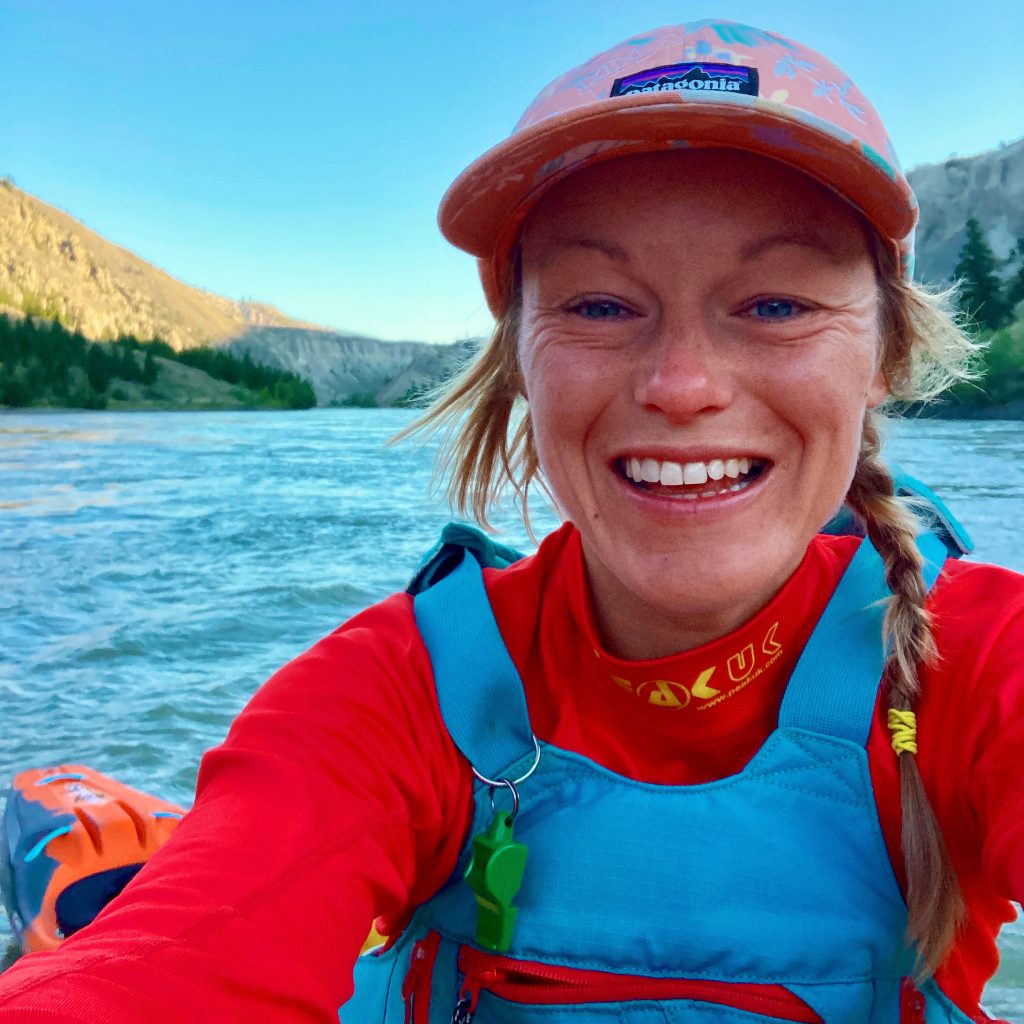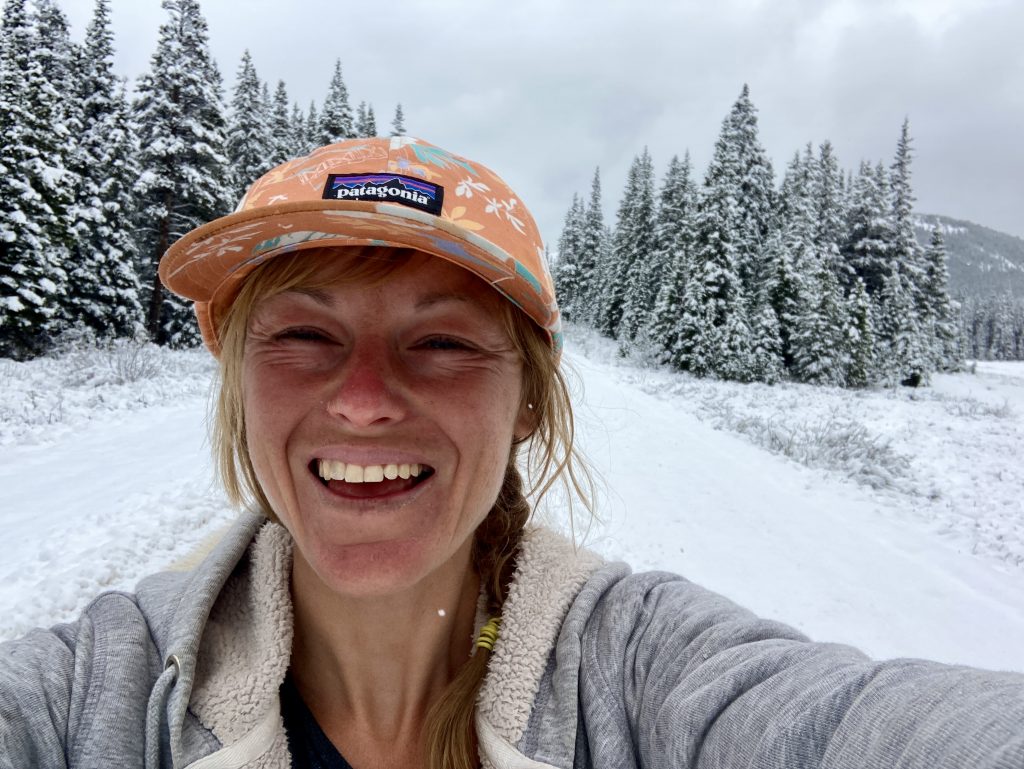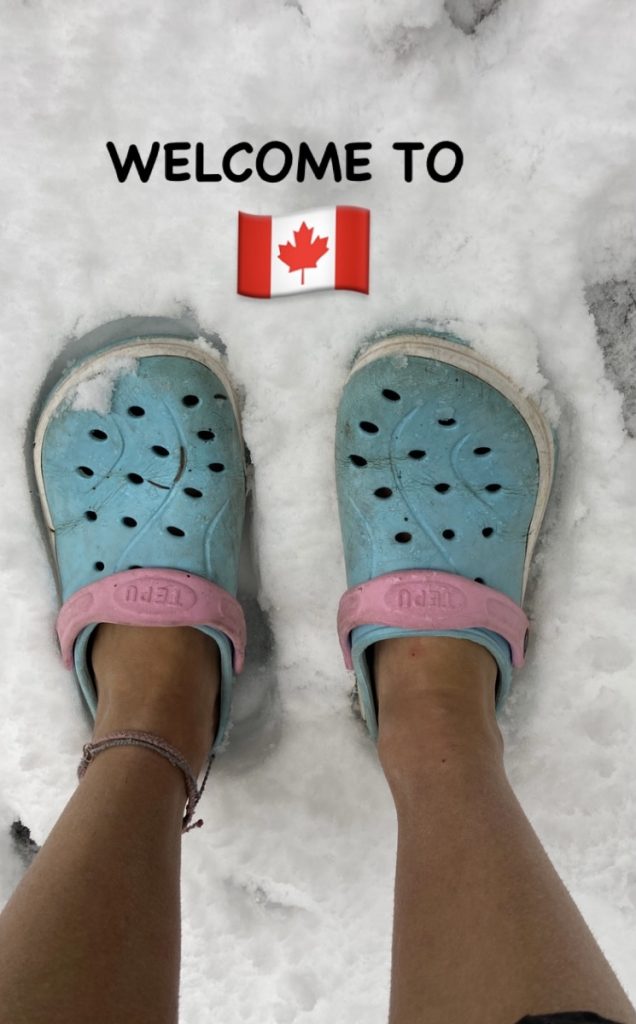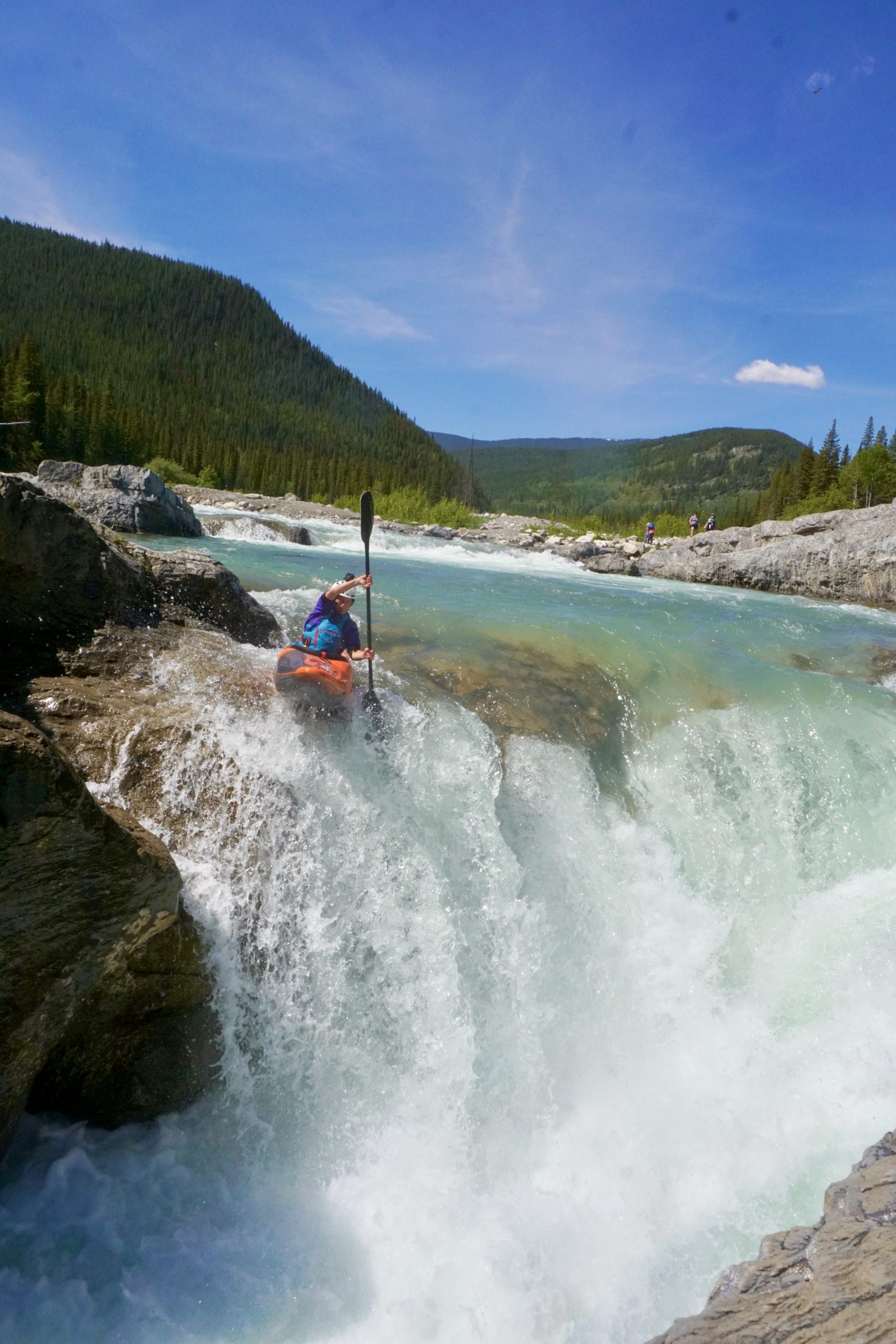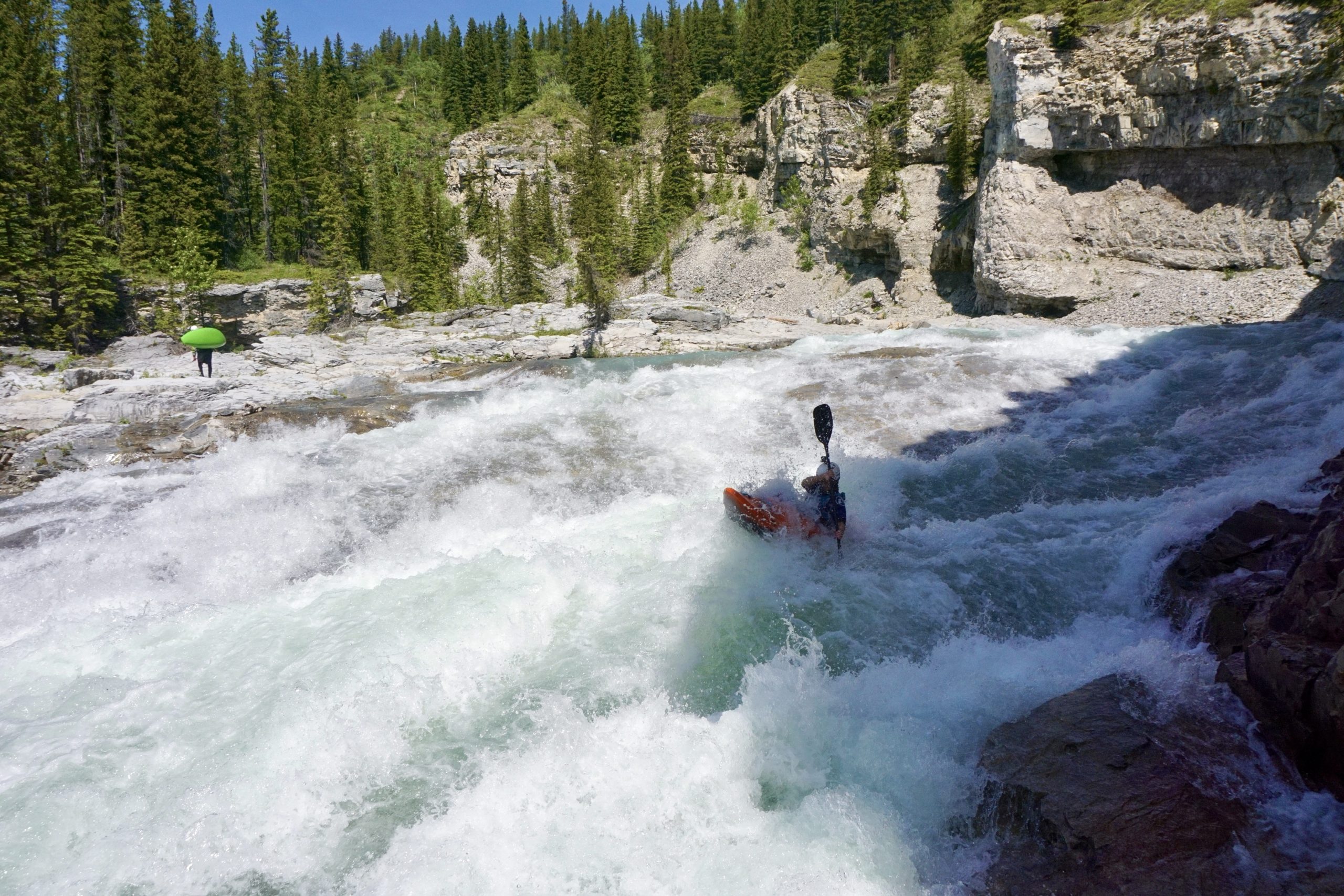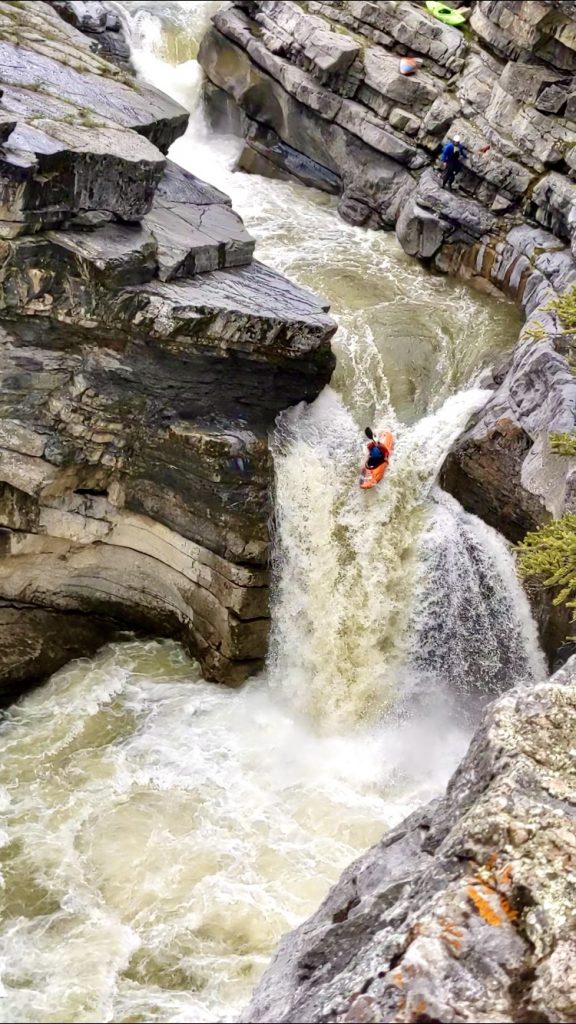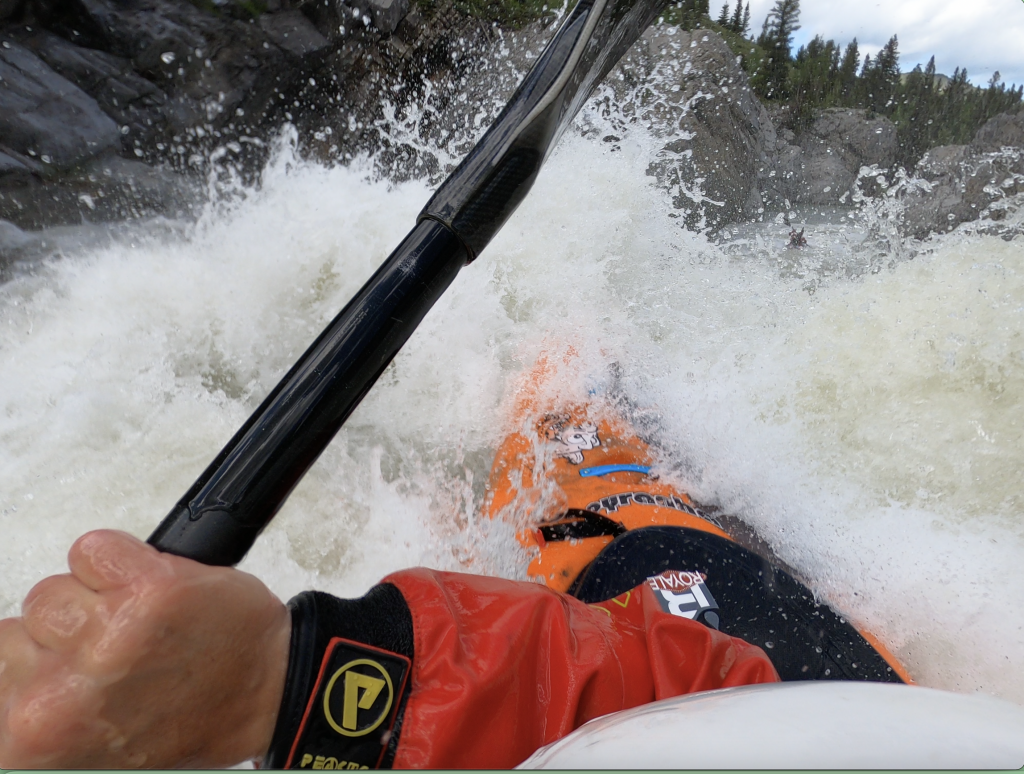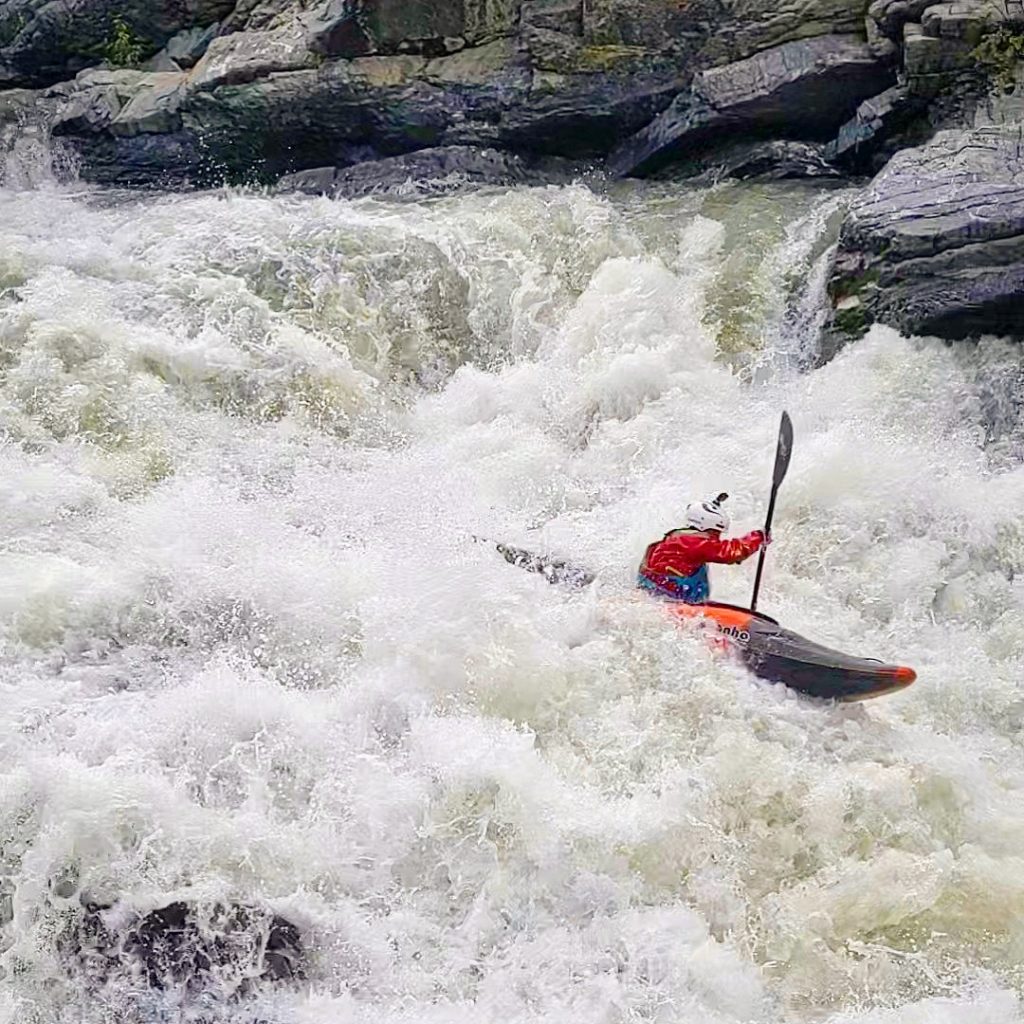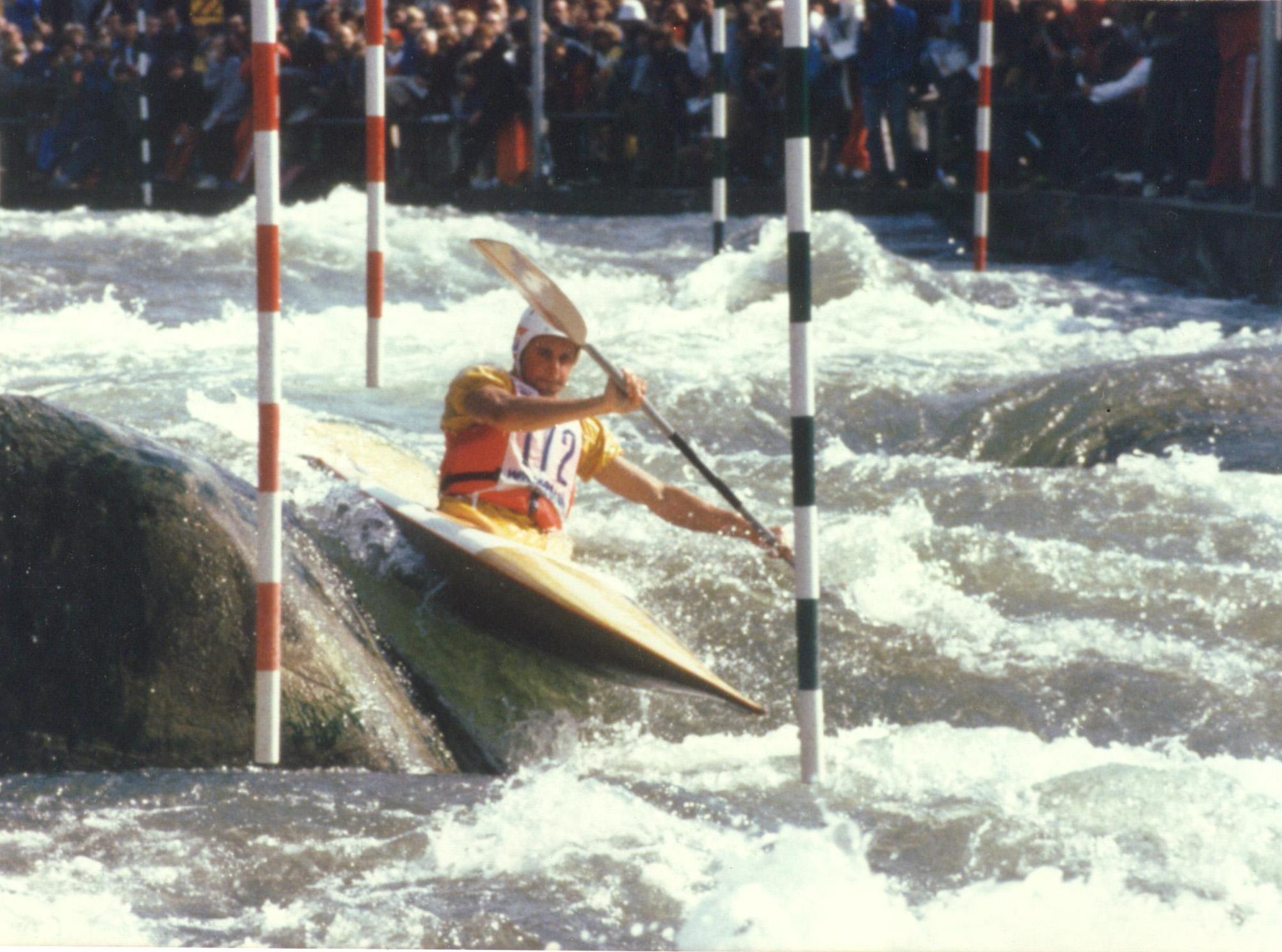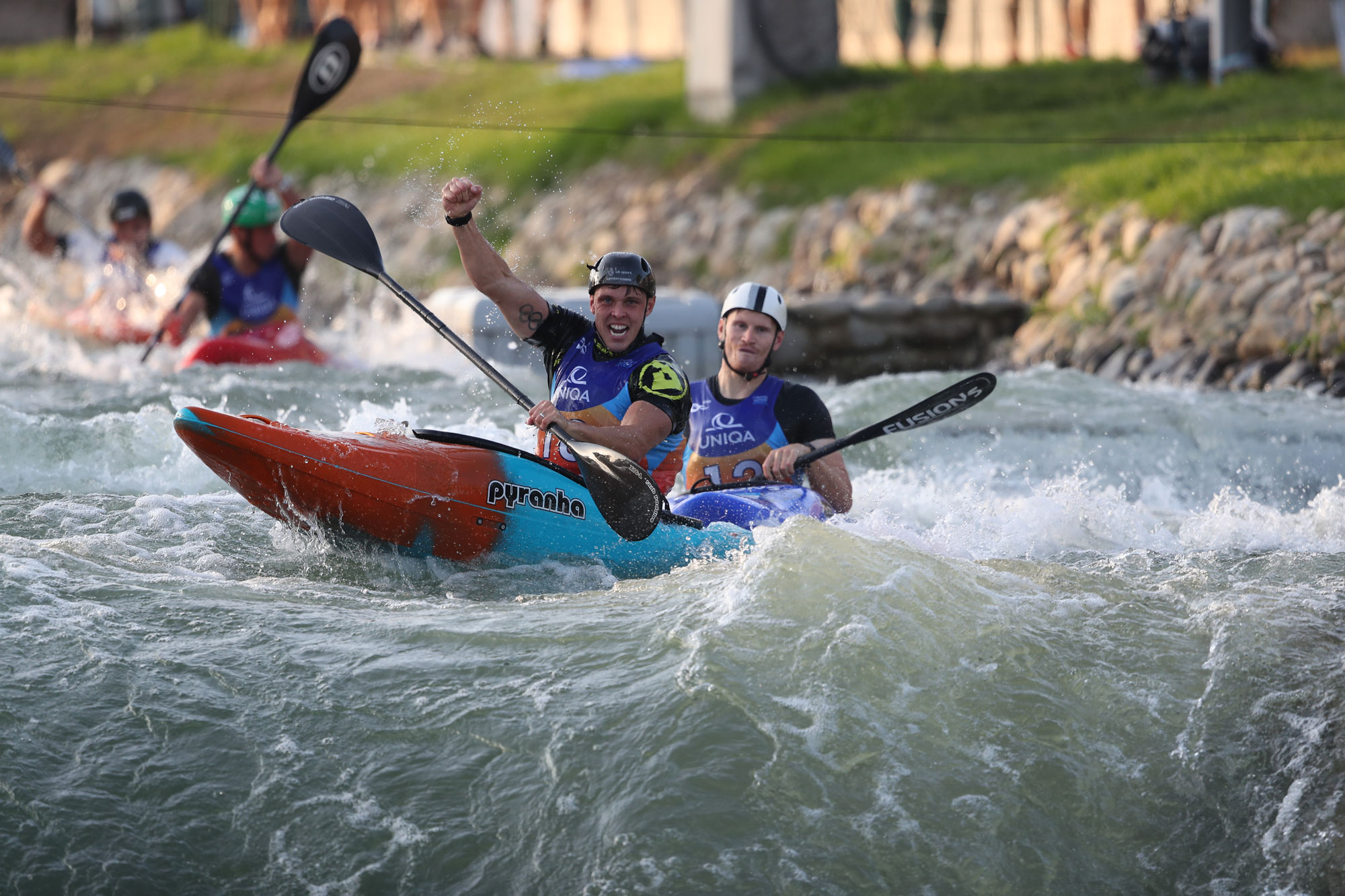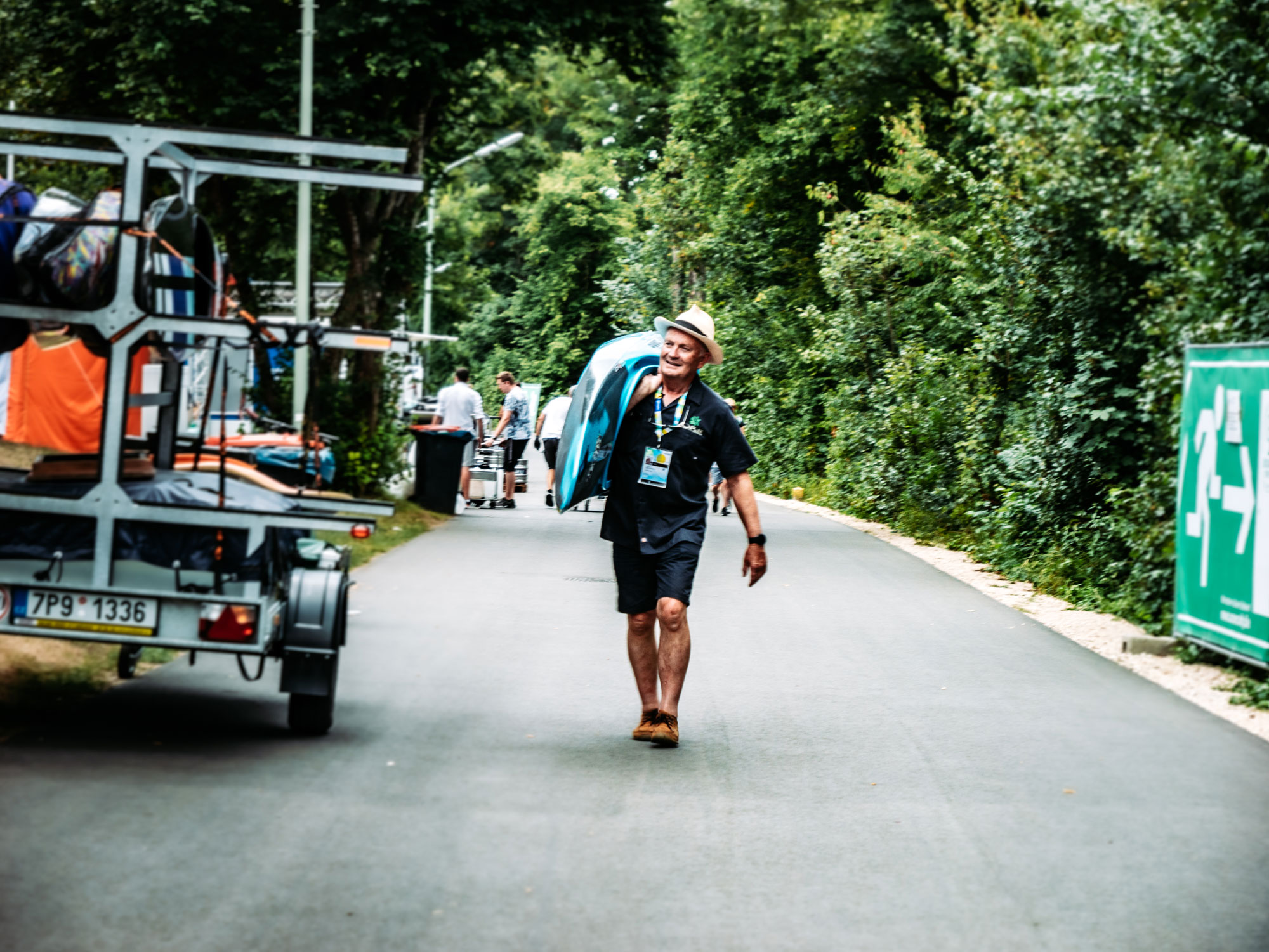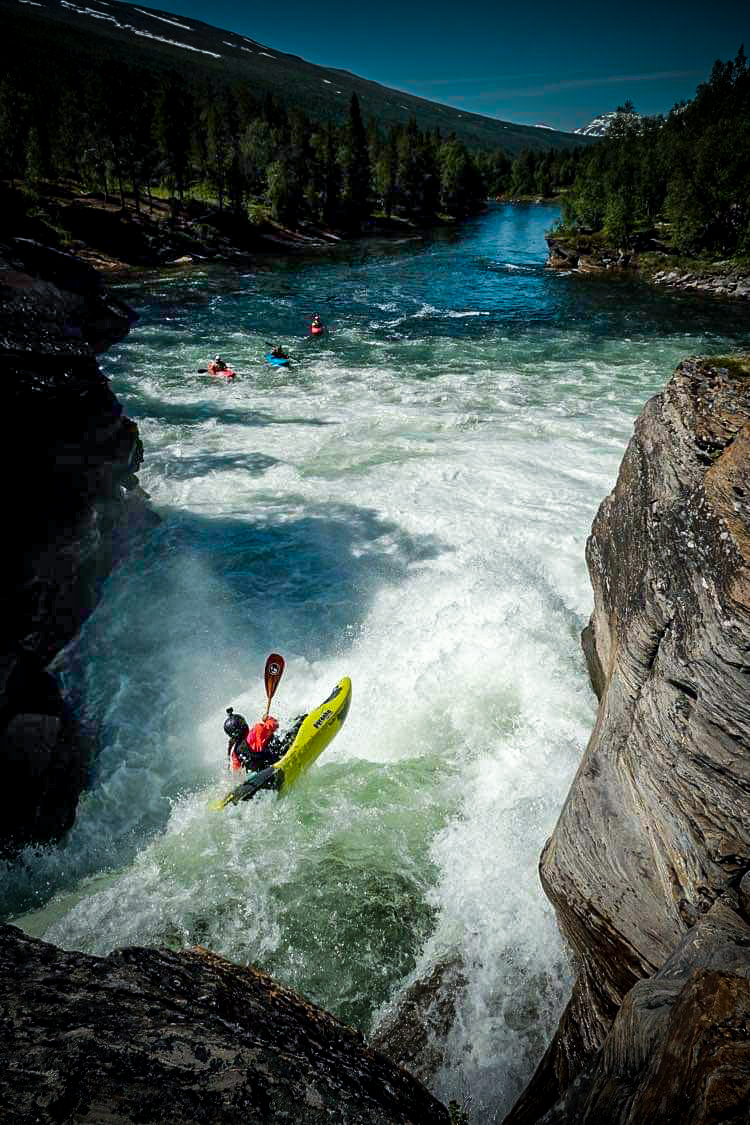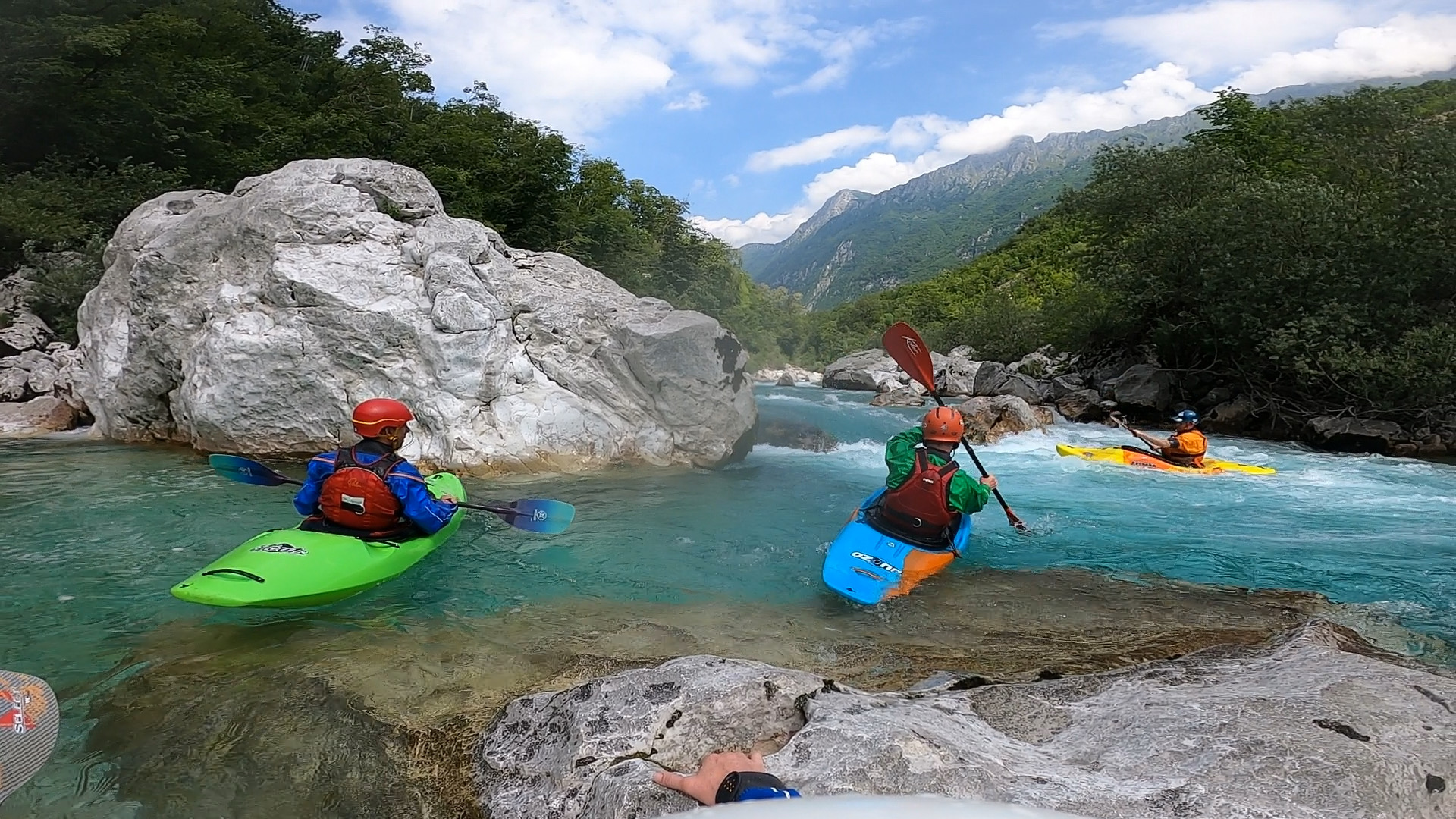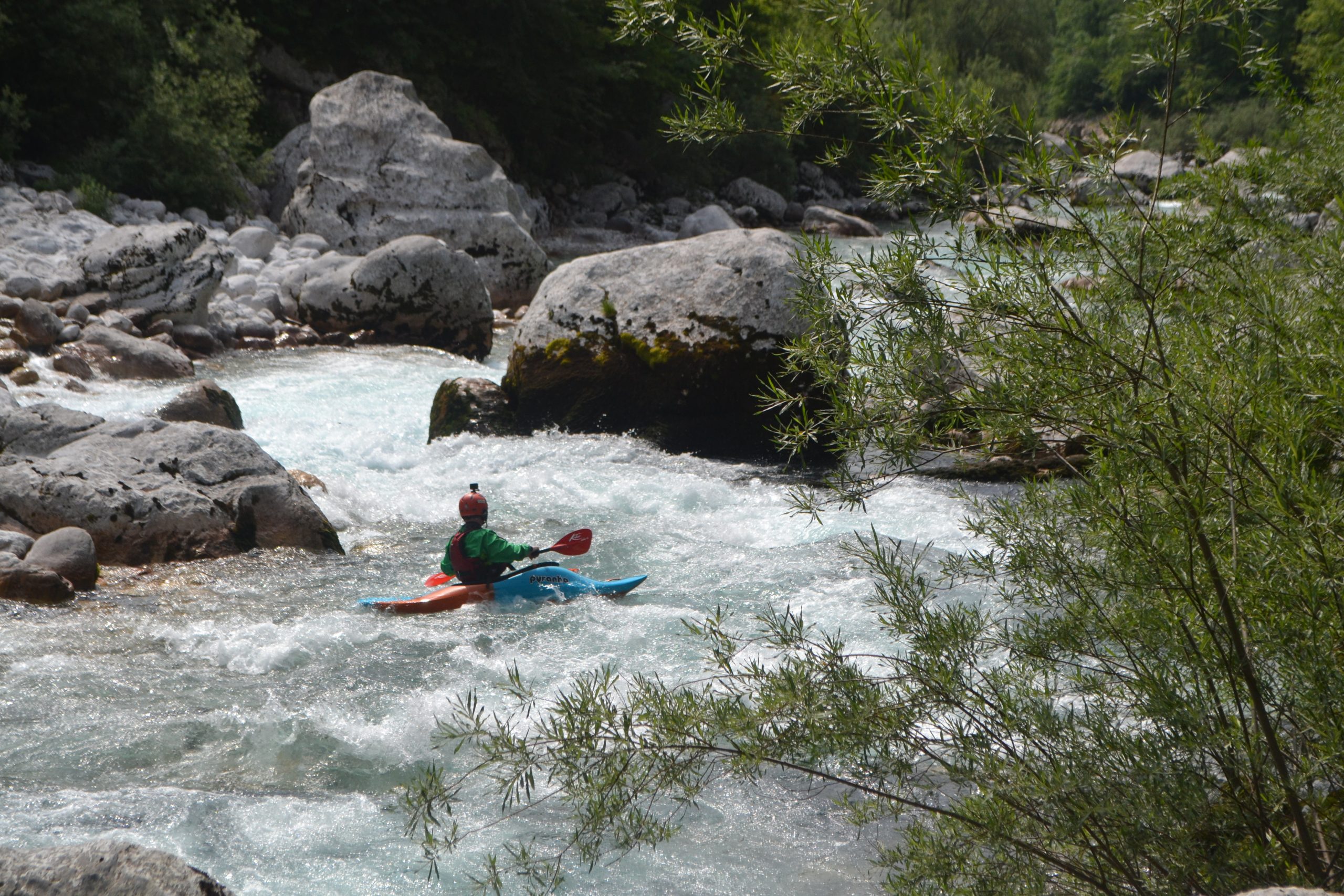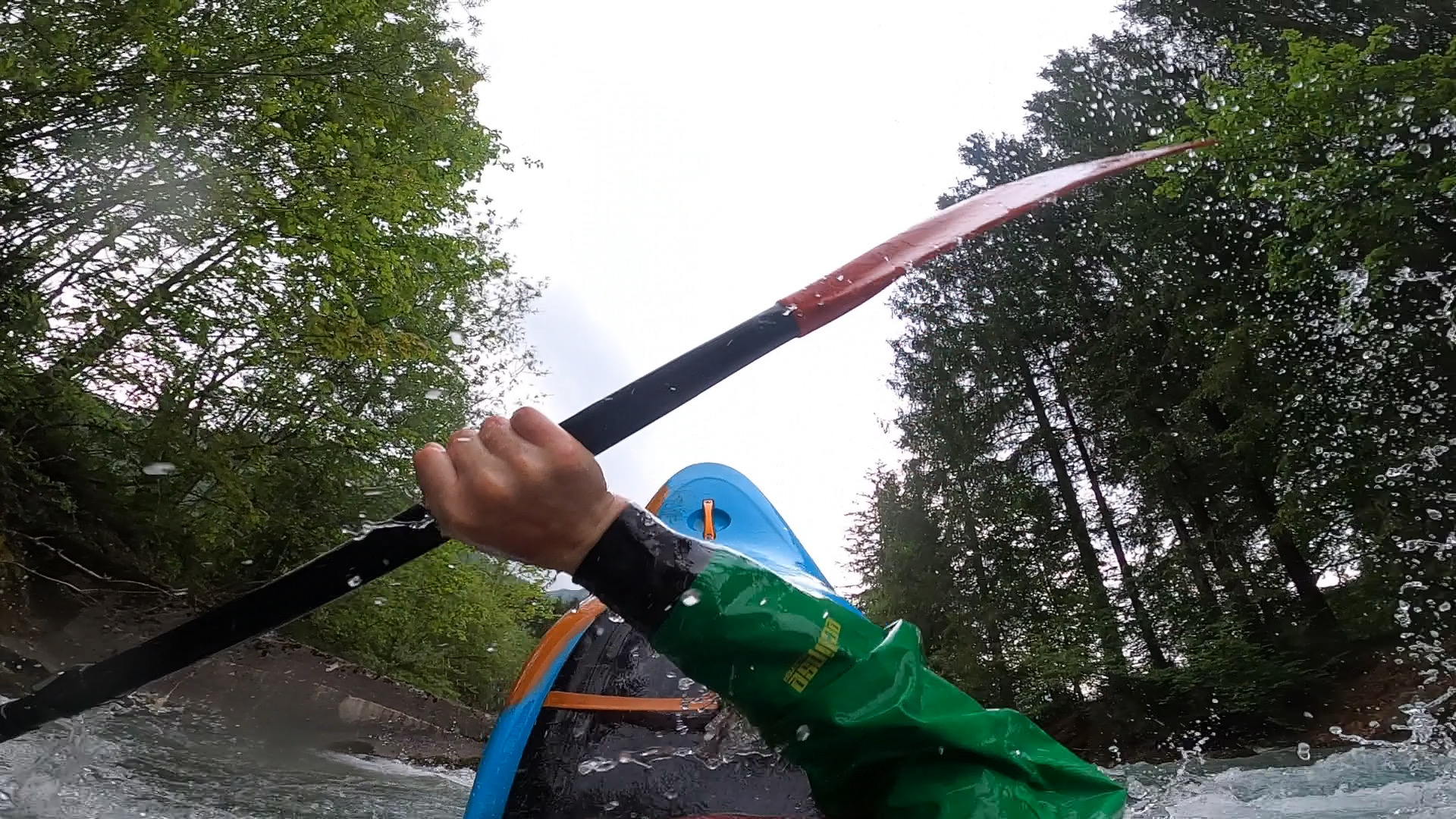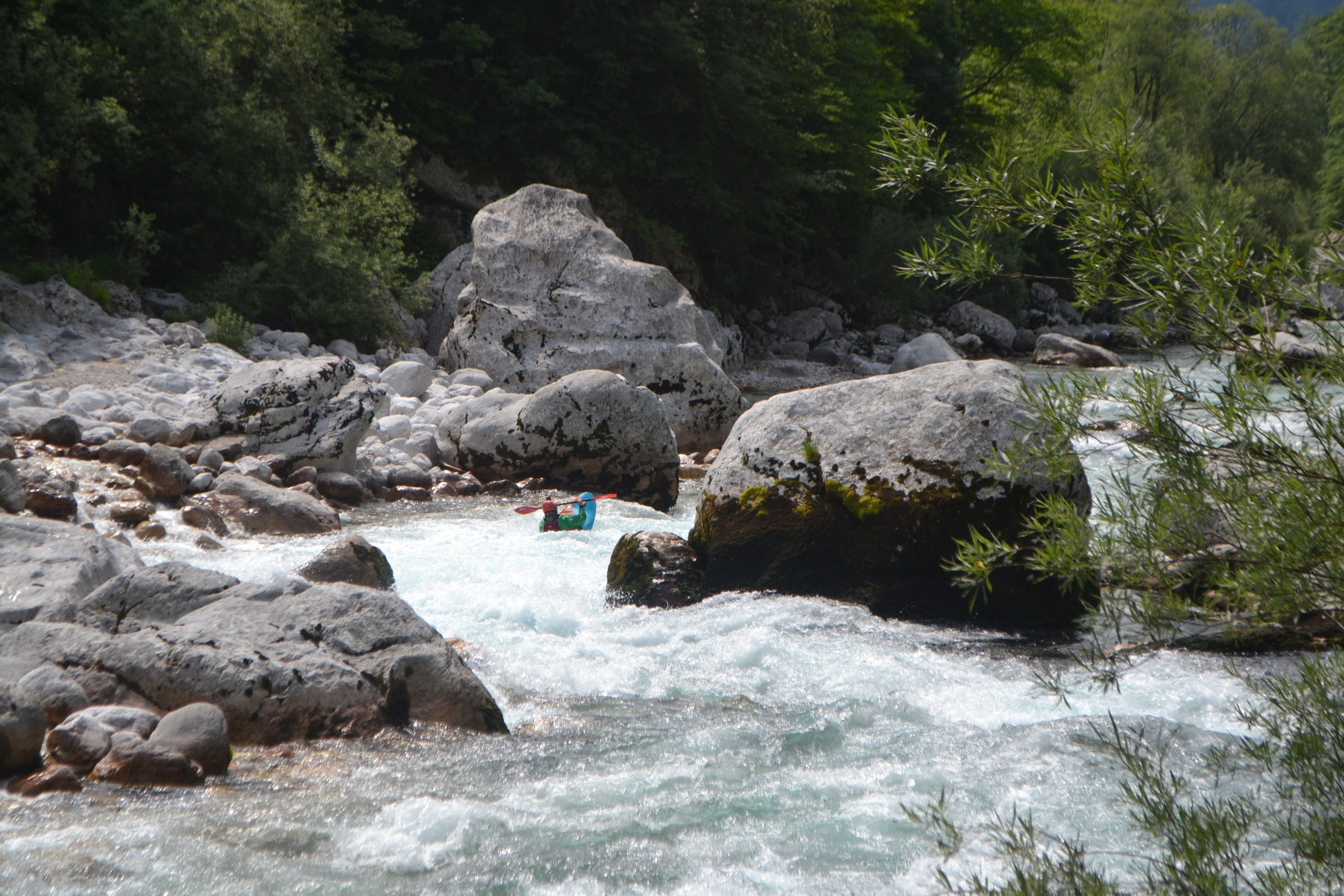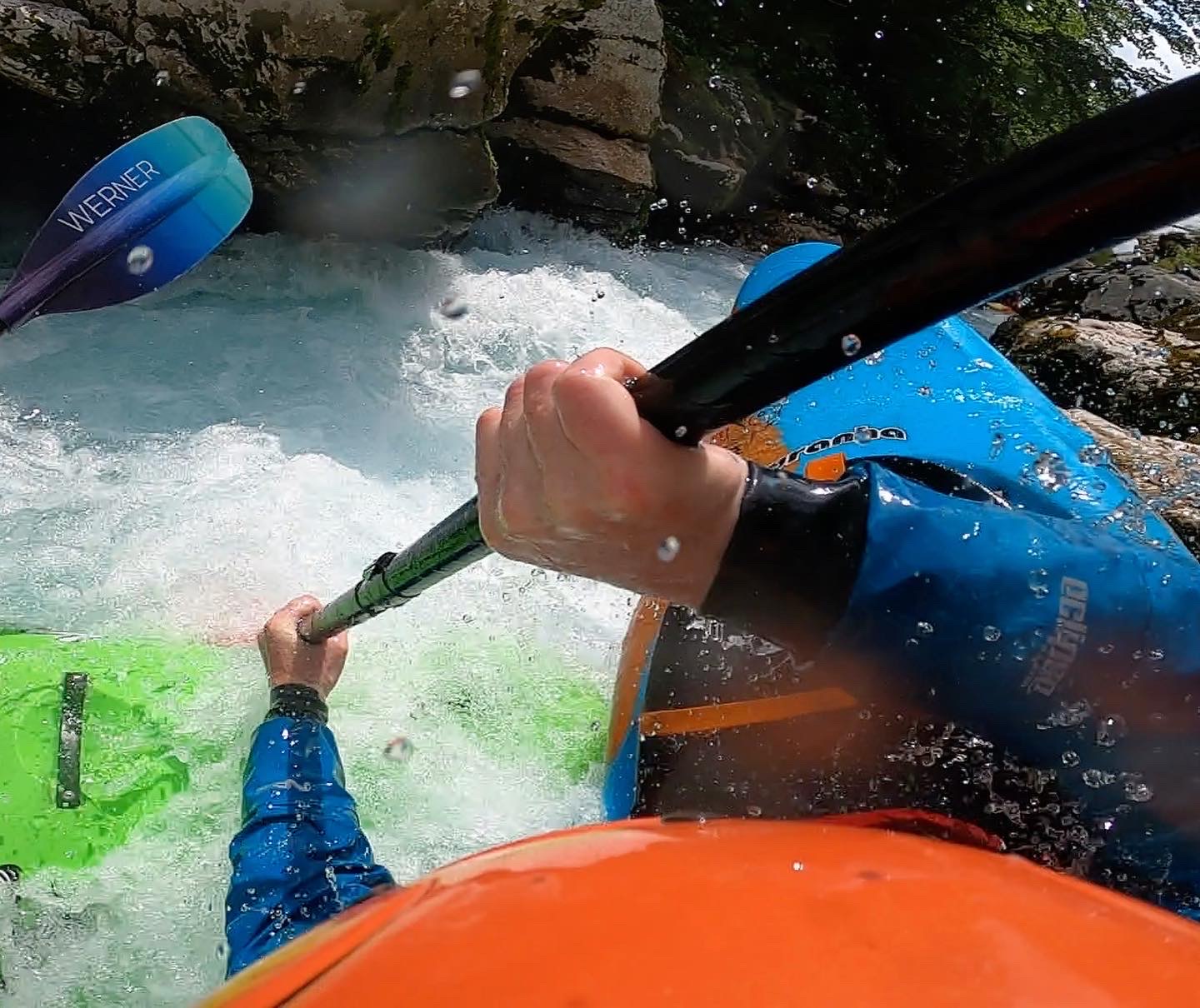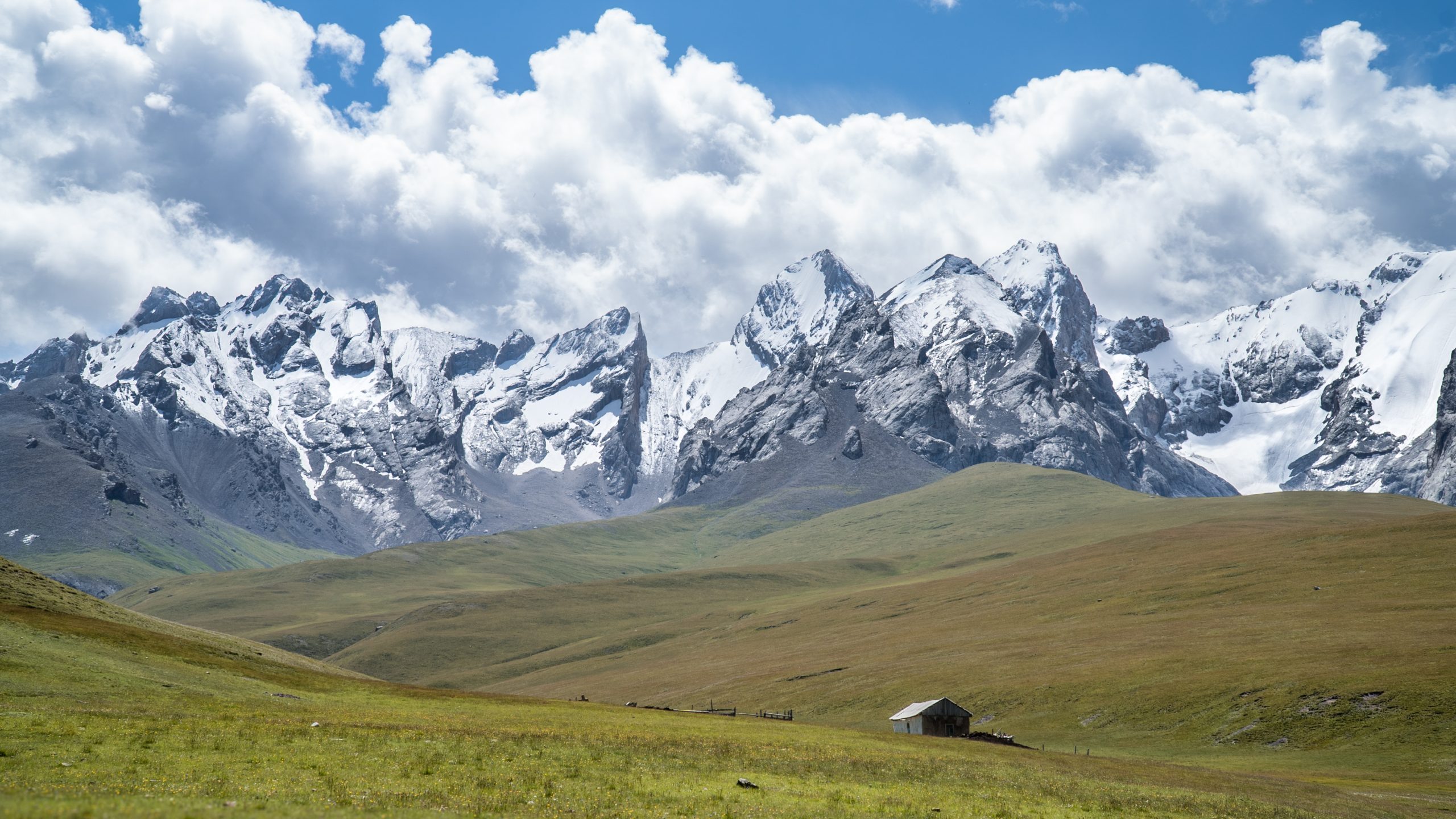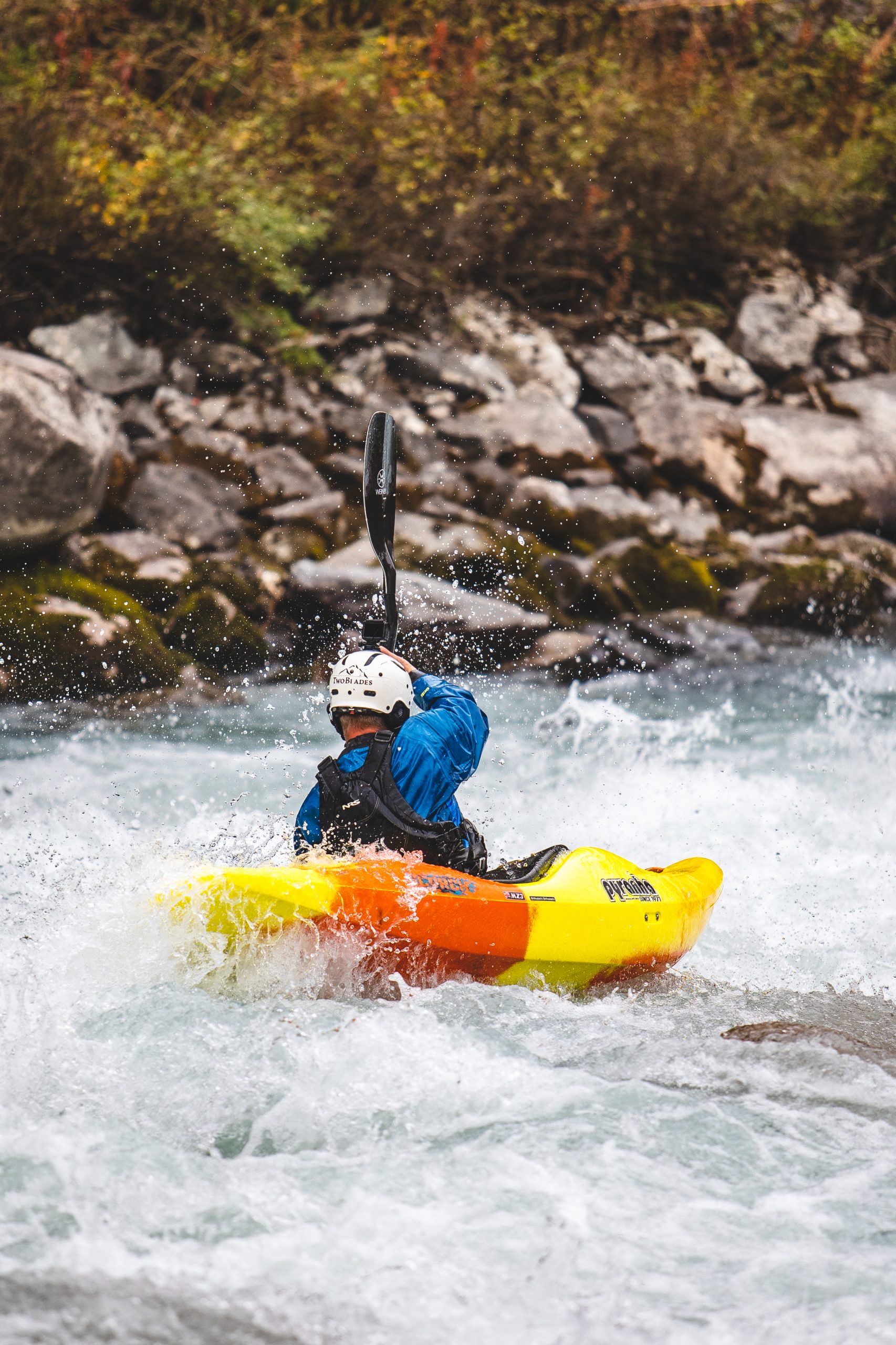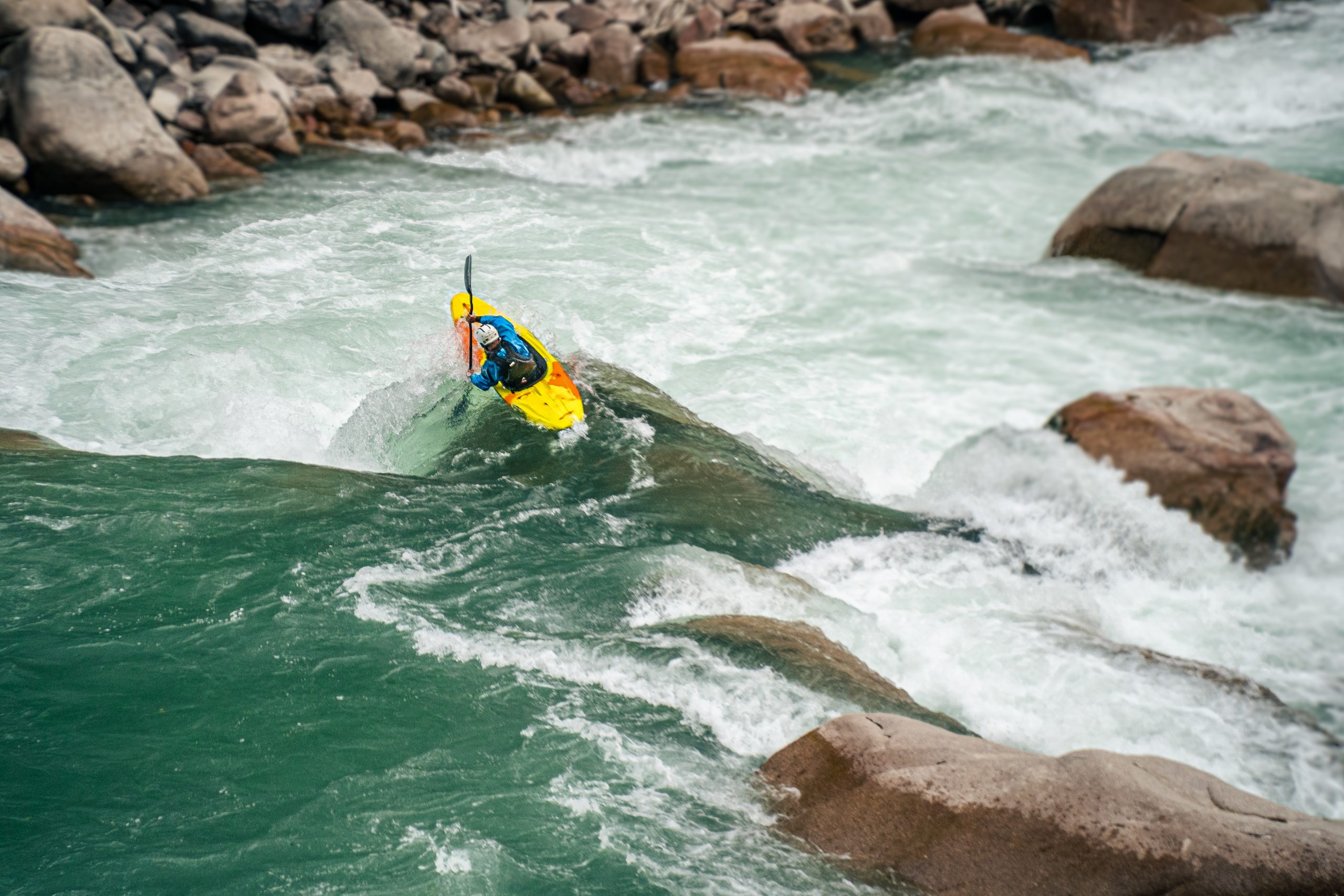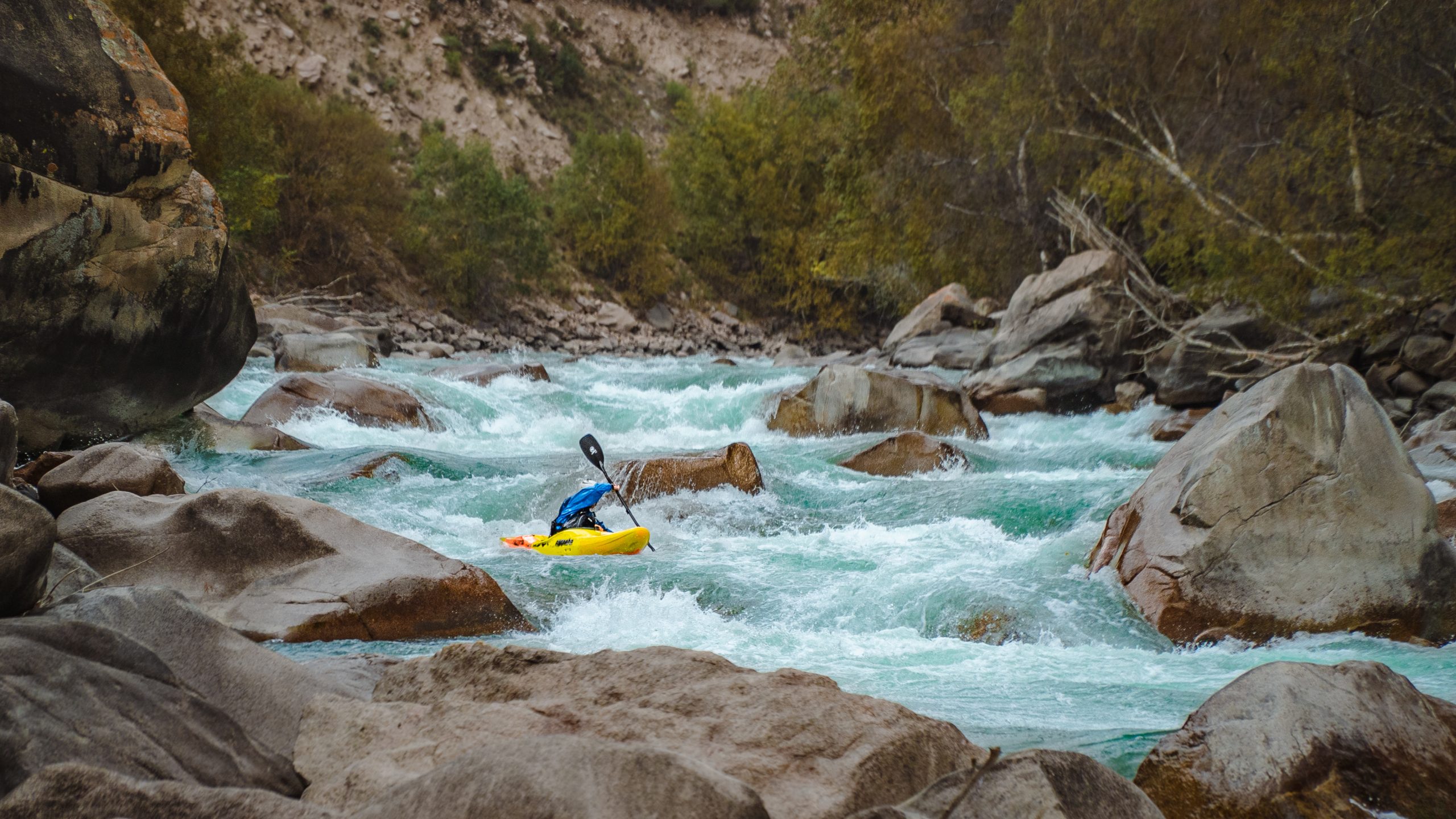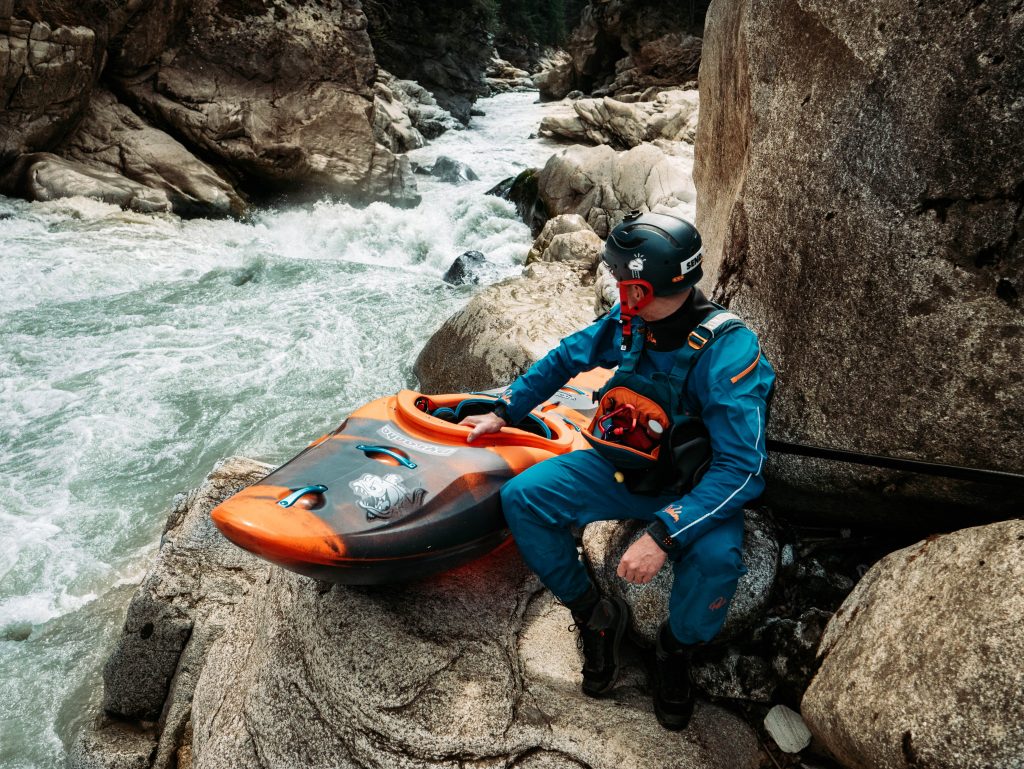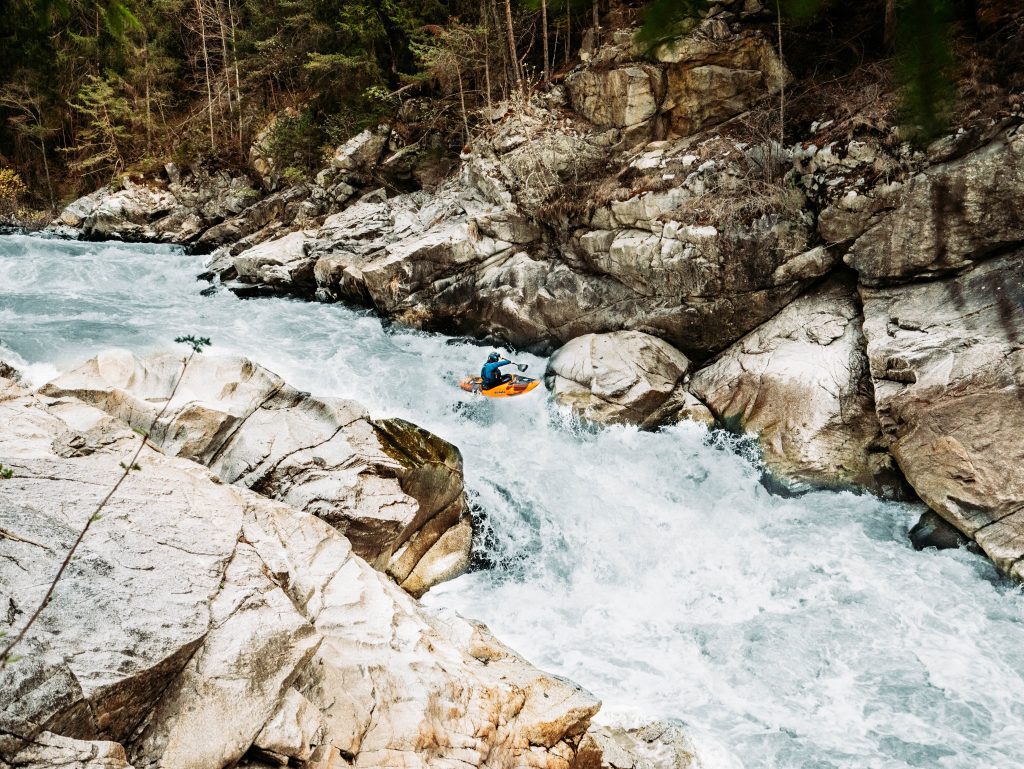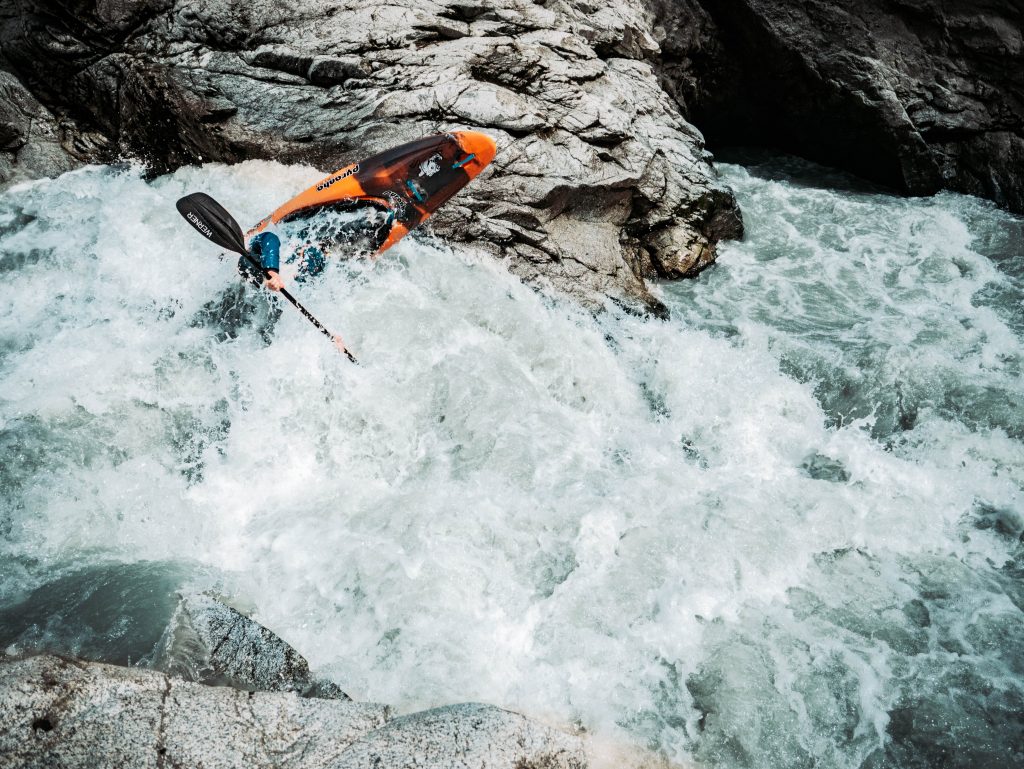Clearwater, British Columbia
The Best Day Ever marathon continues and my Scorch Small and I have made it to BC! Now, I know what fantasies your brain is already playing out – Squamish classics such as the Callaghan – but we’re not quite there yet. Be patient, because there’s a huge amount of epic whitewater on offer between Alberta and the south coast.
Our next stop is a place called Clearwater, in Interior BC, just north of Kamloops. In the planning stages of this road trip, all my pal Benny had told me about Clearwater was that the rivers were the warmest in all of BC and were full of big whitewater fun. I was sold.
(If you’re thinking Best Day what? then take a look at my previous blog for a bit of background -or carry on reading to find out more about paddling in the Clearwater area).
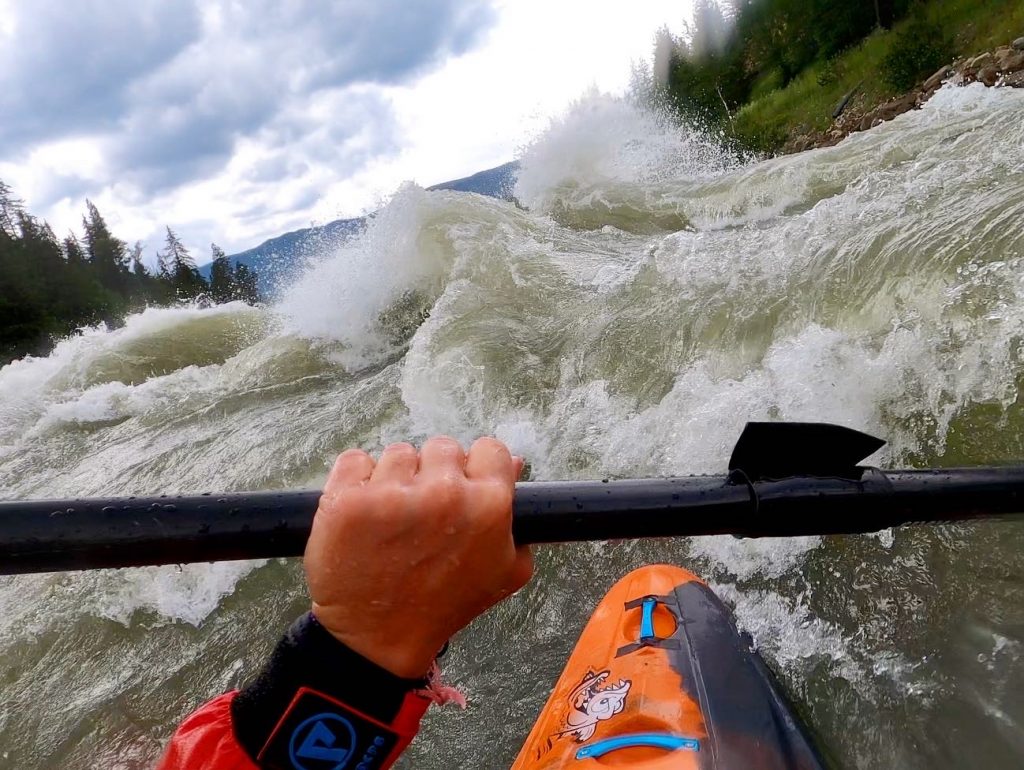
The Clearwater
Levels were pretty chunky when we arrived in the town of Clearwater. Local raft companies weren’t operating due to the high flows (the rafting cut-off was 600 on the gauge and the river was currently running at over 1100!) and it did initially feel like a bit of a ghost town. The huge waves and whirlpools definitely made up for that though! In fact, some of the crazy eddy lines were just as entertaining as the main (massive) river!
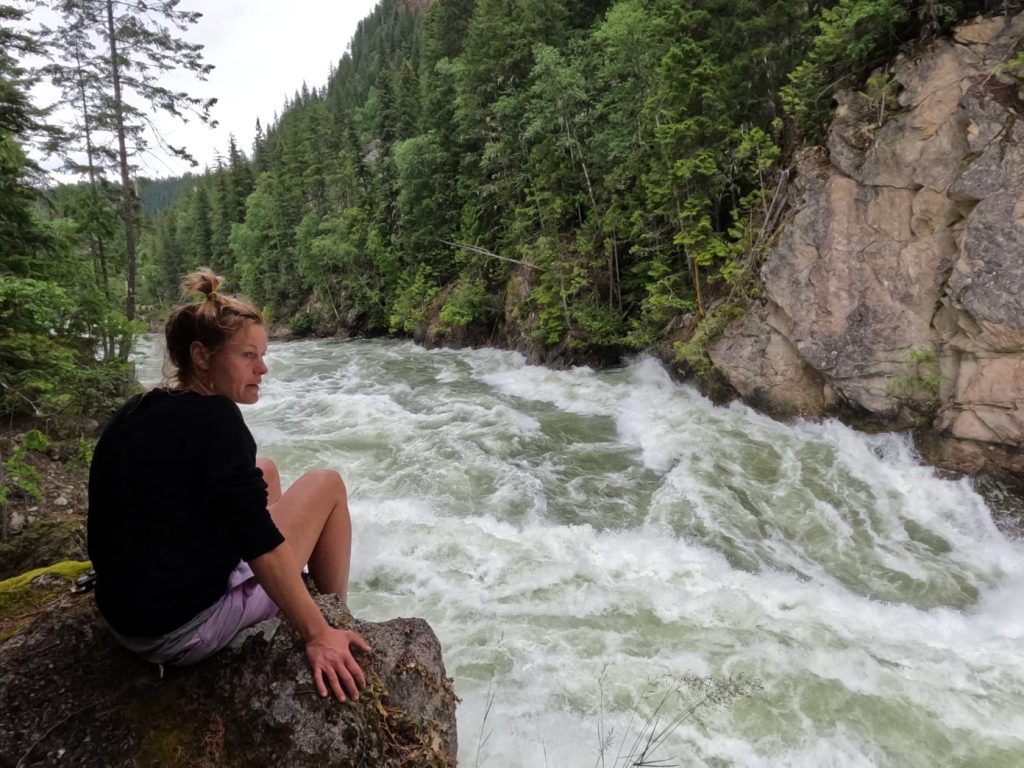
It’s a short but super fun section and you can jog the shuttle in less than half an hour (just try not to surprise any bears out for their morning walk like I did!). Many local paddlers also enthusiastically sing praises for the sweet surf waves that come in as the river levels drop, evident from the number of surf kayaks ready and waiting in peoples’ backyards!
There are also some super pretty camp spots overlooking one of the most popular surf waves, ‘Pink Mountain’ and if you stick around until dusk you’ll see how this one got its name.
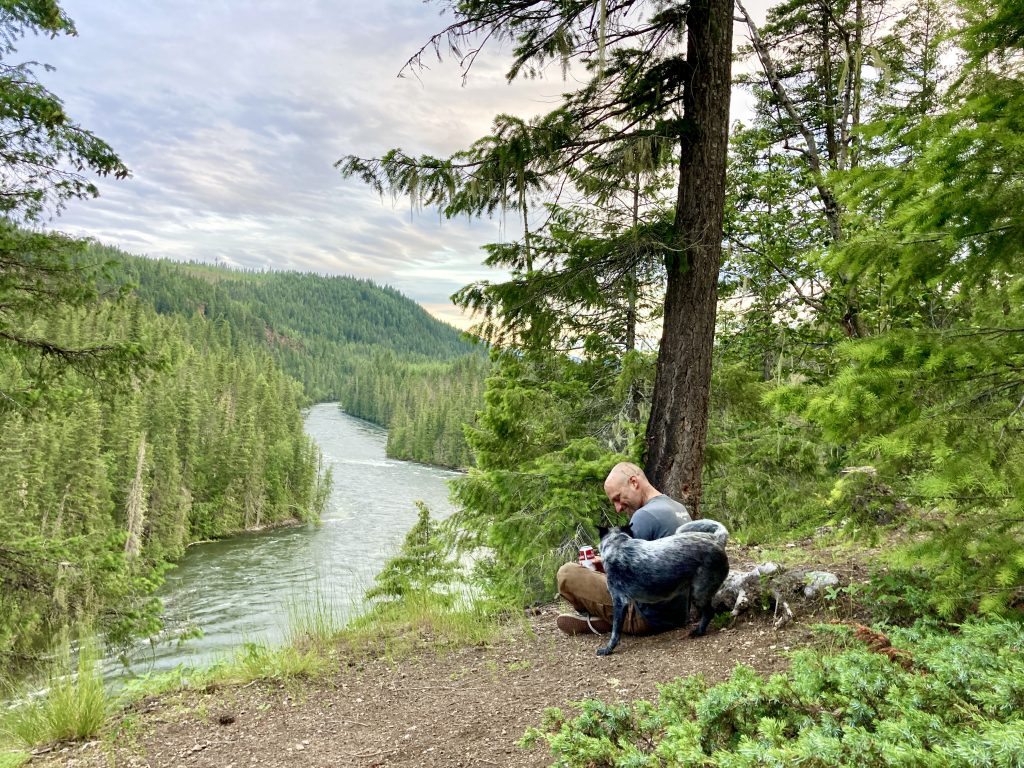
Raft River
As water levels began to drop, we were lucky enough to catch this one at the primo level. In fact, it wasn’t until after we ran it that we realised just how lucky we were! We met many local paddlers who, despite living in the area for several years, still hadn’t managed to get on the infamous Raft River!
There’s a fair bit of hype around this run and I think it’s fair to say that it totally lives up to it. Like all new runs, it’s extremely useful to have someone on the team that knows the section and in this case, it was especially helpful for finding the put-in! A rough dirt track eventually leads to a barely noticeable opening in some woods and a steep trail. Between Tara and me I think we fell over 50+ times.
The river starts with a bang and pretty much just keeps going! The high-sided canyon walls of this deep and committing run add to the feeling of adventure, regularly reminding you that there’s no easy way out other than downstream.
A handful of bigger, more defined rapids are interspersed with ‘boogie water’, which in my opinion was just as exciting as the ‘main events’ (I’m quickly learning not to relax too much when a BC paddler says ‘the next bits just boogie’!).
After a tonne of awesome rapids, which perhaps aren’t represented too favourably with names such as Poop Shoot and Cag Muncher, an ominous horizon line marks the finale -a beautifully clean, boofable, 20-footer. A super sweet end to a perfect dawn run down the Raft River.
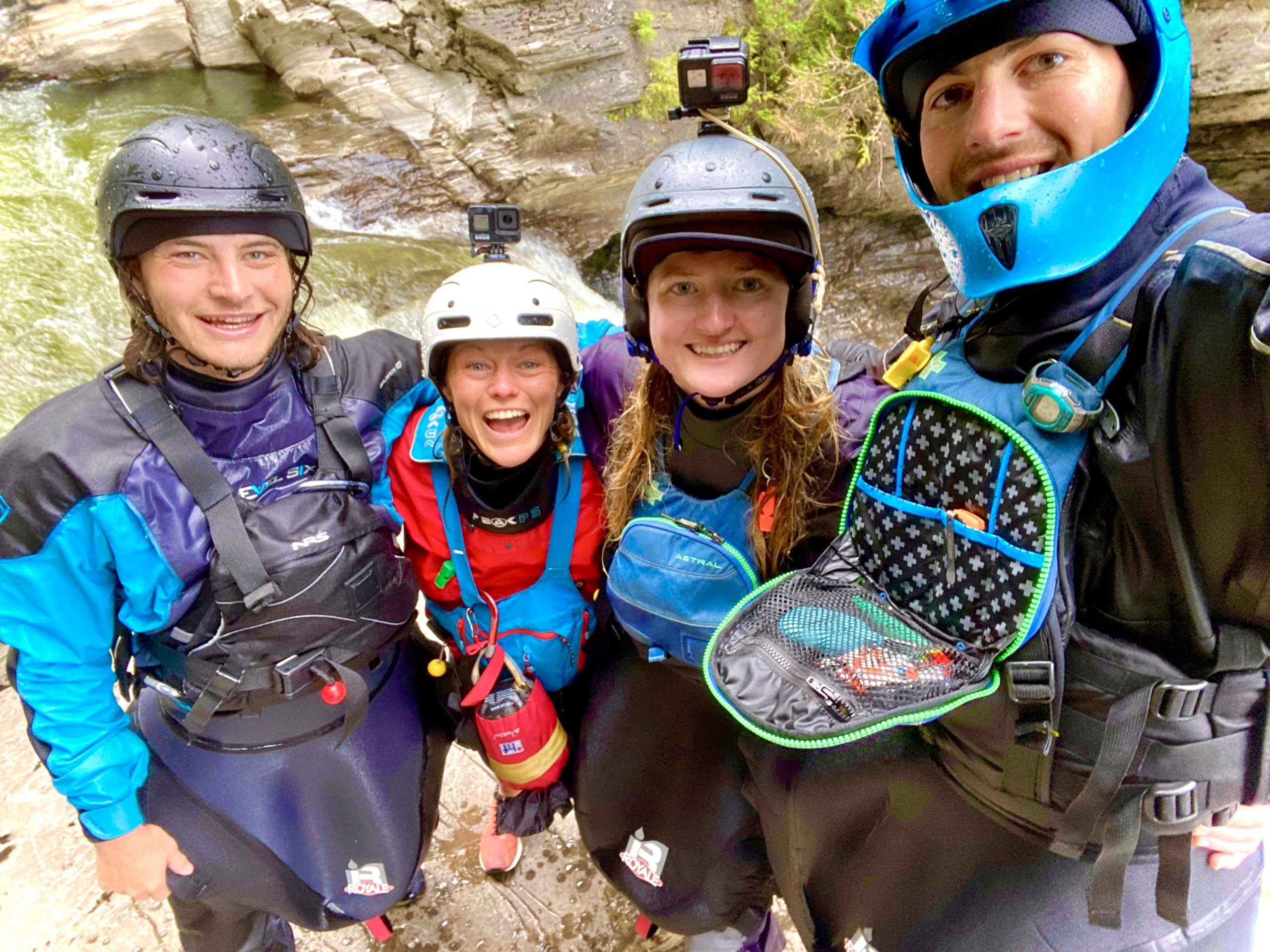
North Thompson
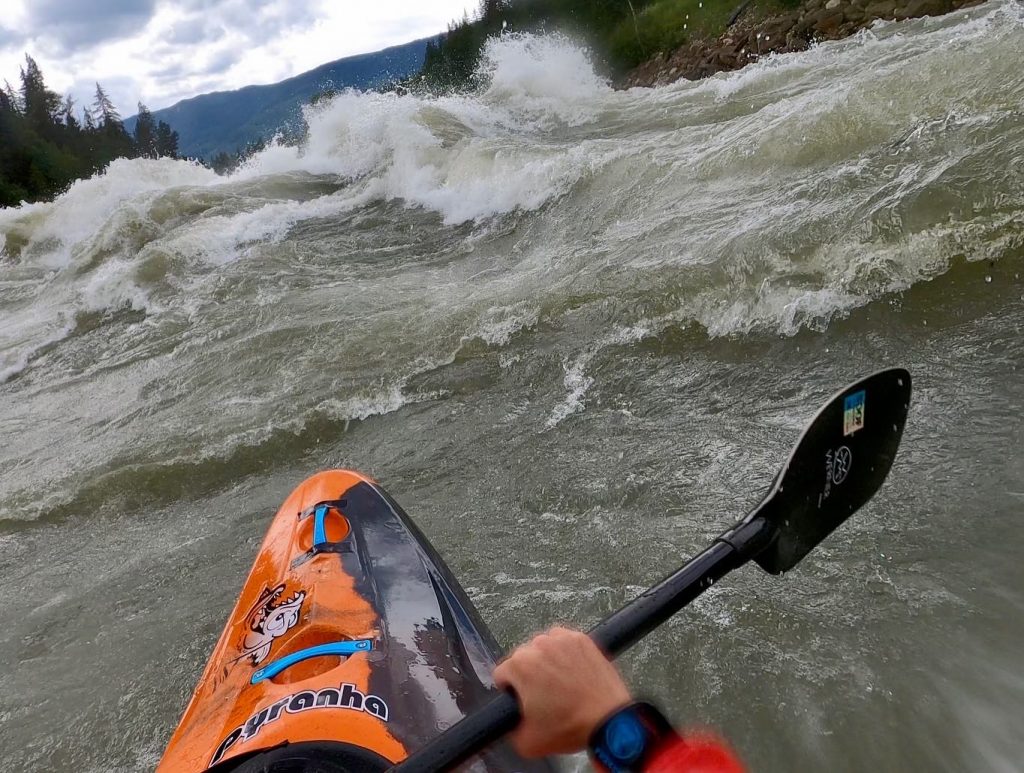
The level was juicy when we put on the North Thompson, and the first 30 minutes of paddling was mostly washed-out. I’ve been told there’s a good amount of class 2 and 3 in this section at more regular flows though, which would have provided a nice warm-up for what was to come!
The two rapids of note (in fact the only two rapids on the entire section at this flow!) were Wicked Wonda and the confluence rapid, where the North Thompson meets the Mad River.
Wicked Wonda seemed to come out of nowhere and at these flows, she was HUGE! Benny was ahead of me and I watched him ride down a large, glassy wave before he disappeared into the jungle of chaos. My eyes were probably on stilts as I dropped into the confused, unpredictable, barreling, and crashing waves! It felt like being on the ocean during an epic storm!
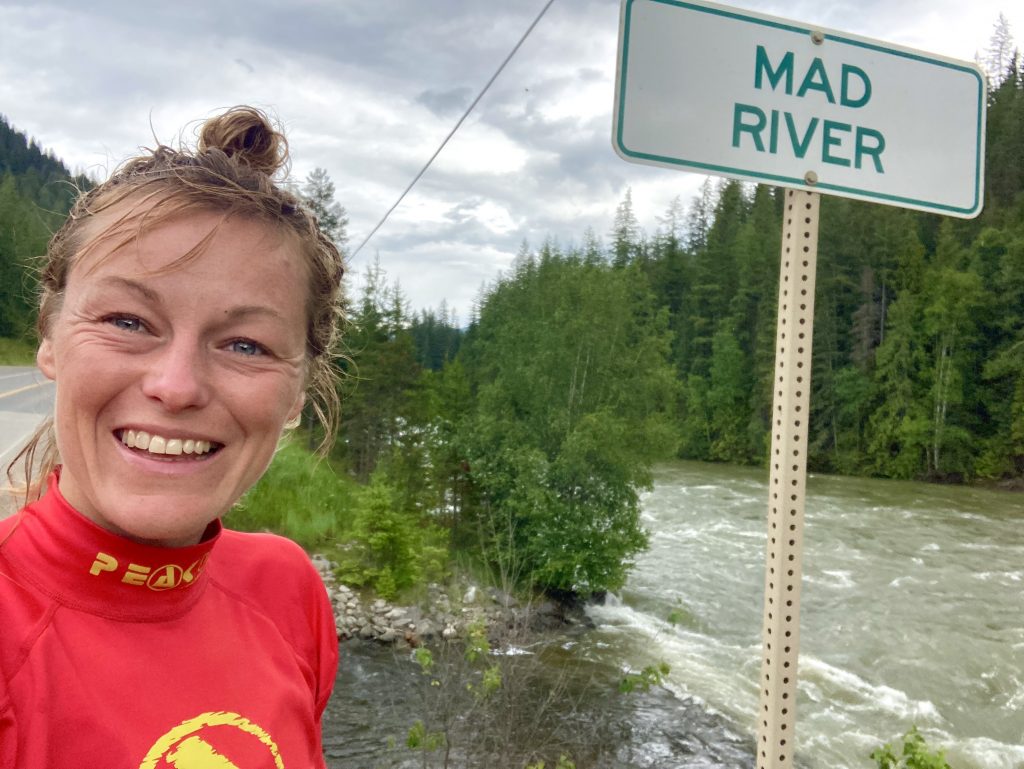
Mad River rapid, which we’d glanced at on the way to the put-in, was equally as huge and chaotic. The name suited well, as it definitely felt mad as we battled to maintain some sort of control whilst being thrown all over the place. It had looked much smaller from the road! And of course, it all looks tiny on GoPro.
Shout-out to the rafting guys that gave us a shuttle ride in the bus! And to Benny Clark for the lines and good times!
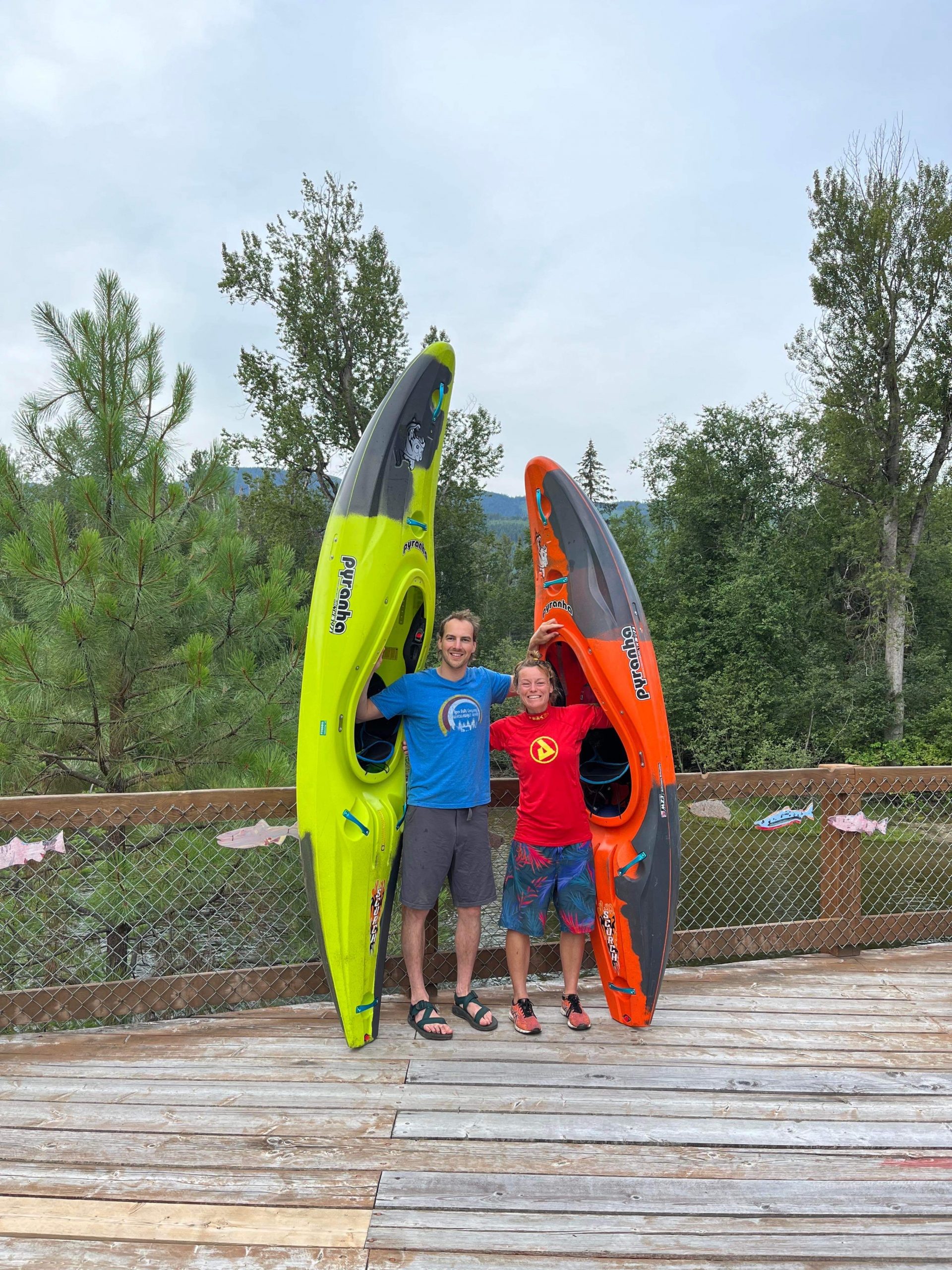
Photo: Roko Hoser.
I ended up making two visits to Clearwater, the first time with my pal Benny Clark, and the second time with Tara Blair. The two trips had very different water levels, really highlighting how awesome this place is at both higher and lower flows. The Clearwater river itself is a great training ground for big water, with lots of surf waves and friendly whirlpools and as water levels drop, there are a few hidden gems in the area that come into play! One of the biggest things that stood out the most in Clearwater though, was the river people. Within no time at all, we had all the beta we needed, a friend’s backyard to camp in (shout out to Travis and the boys!), the offer of surf and playboats, as well as plenty of people keen to get out on the water! Huge thank you to everyone that we met and who welcomed us into your awesome community!
Follow Sal’s adventures – www.instagram.com/sal.montgomery
Sal’s creeker of choice for her Canadian road trip is the Scorch Small, because (in her words) ‘it’s fast, fun, and boofs like a dream!’
